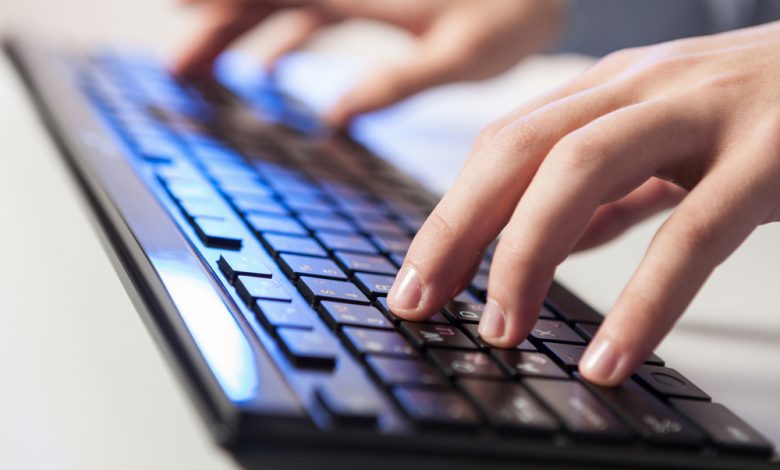
If your old and trusty wireless keyboard has stopped working or if you've just bought a new one, but it can't seem to work on your device, do not immediately label your device useless. Wireless technology is great but also quite fussy. We have prepared a detailed troubleshooting guide, covering the most common issues that could cause your wireless keyboard not to work.
Table of Contents
How to Connect a Wireless Keyboard
Connecting a wireless keyboard is as straightforward as it can be: you plug in the USB receiver and wait for Windows to install the associated drivers. If the keyboard has an ON/OFF button, press it to turn on your keyboard, and you should be ready to go.
If you want to connect your keyboard to your computer's built-in Bluetooth, you will have to pair the two devices.
- Power ON your keyboard.
- On your computer, open the Start menu, click the settings button (⚙) above the power button).
- In the Settings window, select the "Devices" section.
- In the new Settings window, under the Bluetooth & other devices, make sure that the toggle switch under Bluetooth is set to ON.
- Click the "Add Bluetooth or other devices" button.
- In the Add device window, select "Bluetooth."
- Once Windows detects your keyboard, select the keyboard, and wait for the two devices to connect.
What to Do if Your Keyboard Doesn’t Work After Setup
As with any other technology, the normal operations of wireless peripherals could be obstructed by various computer issues, including driver malfunction, bugs, and malware.
Use Windows Keyboard Troubleshooter
The Windows Troubleshooter is a feature developed to diagnose and fix various system issues. Although the Troubleshooter is somewhat limited when it comes to hardware problems, it is a great place to start when dealing with an unknown issue.
- Go to the Start menu, and click the Settings (⚙) button (above the power button).
- In the Windows Settings window, type "troubleshooter" and select the "Troubleshoot settings" option from the drop-down suggestions.
- In the Settings window, under Troubleshoot, scroll down the right panel to the "Find and fix other problems" section.
- Under the "Find and fix other problems" section, select Keyboard, and click the "Run the troubleshooter" button.
- Wait for the Troubleshooter to diagnose your OS. If an issue is detected, follow the instruction to fix it.
Remove and Plug Back in the USB Receiver
The most basic solution, the classic "restart," is the first thing any expert will recommend. The reason is simple: temporary bugs, that will be fixed upon reboot, could be causing the issue.
- Locate the USB receiver that is connected to your computer and plug it out.
- Before you plug the receiver back in, take a look at the USB port.
- Look for signs of damage as the connectivity issue could be caused by a broken USB port. Bear in mind that often used USB ports have the tendency to wear out.
- You can try plugging the receiver into another USB port.
Check Your Keyboard Batteries
It is essential that your keyboard has a working power source.
- If your device uses standard batteries, replace them with a new set.
- If the keyboard has a rechargeable battery, fully charge it before resuming the use of the device.
Reinstall the Keyboard Driver
Once you cross hardware issues off your list, focus your attention on the software that controls the device – the drivers.
The drivers are pieces of software that Windows uses to control connected hardware. Outdated or faulty drivers can cause various issues, including preventing your wireless keyboard from connecting to your computer. Maintain updated drivers to avoid incompatibility issues.
- Open the Start menu, type "device manager", and select the Device Manager app.
- In the Device Manager window, click the horizontal arrow next to Keyboards.
- Under Keyboards, you will see a list of all keyboard drivers.
- Right-click on your keyboard and select "Uninstall device" from the context menu.
- A popup window will ask you to confirm that you wish to uninstall the selected device. Click the "Uninstall" button.
NOTE: Bear in mind that once you uninstall your keyboard, it will become completely nonfunctional.
NOTE: If you are not sure which entry is your device, you can uninstall all devices as we will reinstall them in the next step.
- Restart your device. Upon bootup, Windows will install all missing drivers.
Additionally, it is also recommended that you check for available driver updates.
In the Device Manager, right-click on your keyboard, and select "Update device" from the context menu.
You will be given a choice between manual and automatic updates. Note that the automatic option might not deliver the latest driver version if the device manufacturer didn't register their latest update in Microsoft's database. Therefore, it is recommended that you also check the manufacturer's websites.





Leave a Reply
Thank you for your response.
Please verify that you are not a robot.